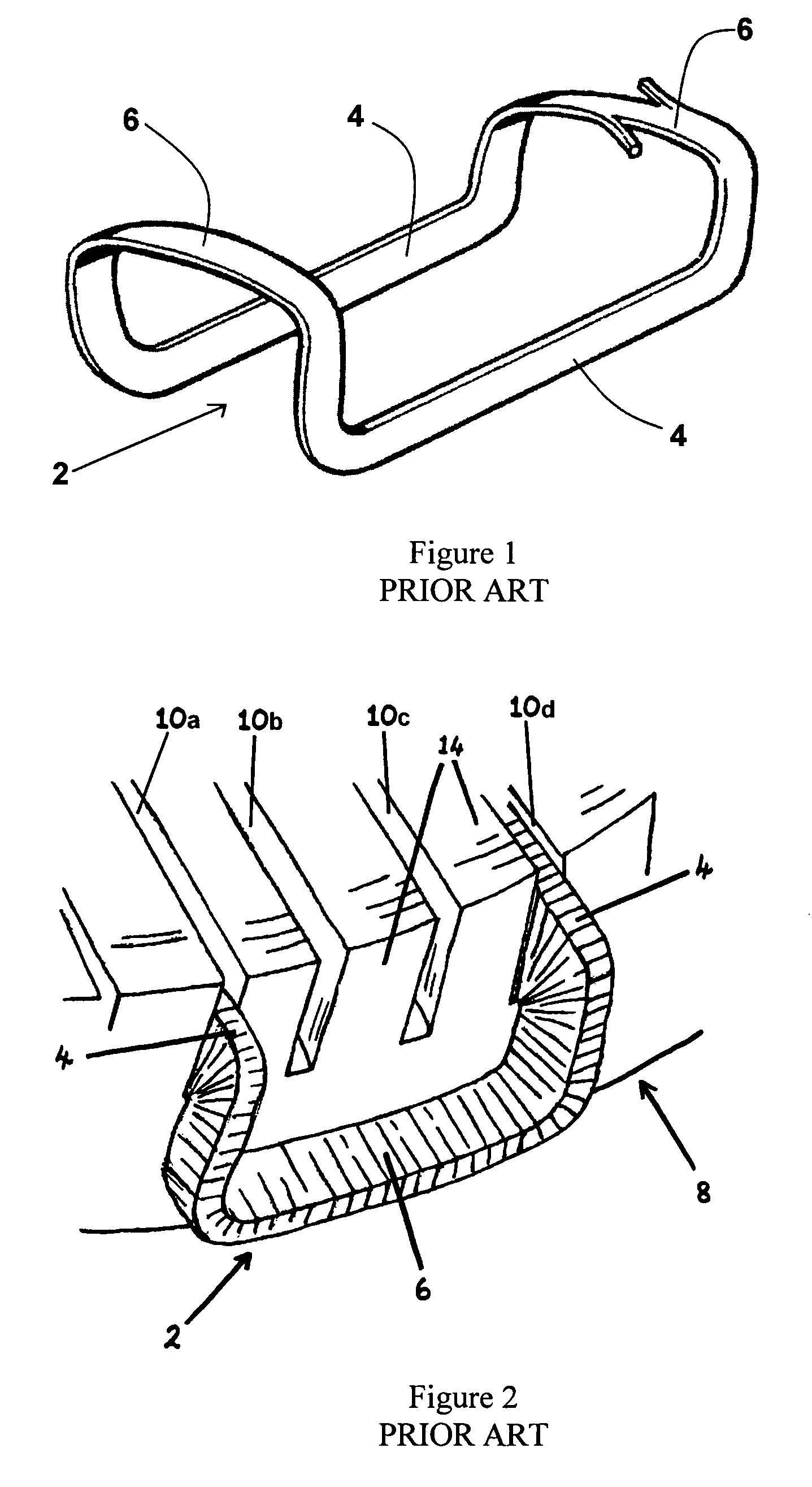Stators for electrical machines
a technology of electrical machines and stators, which is applied in the field of rotating electrical machines, can solve the problems of difficult coil inserting into the radial slots, high degree of skill, and time-consuming winding process, and achieve the effect of increasing the rotational symmetry of the winding slots about the stator, reducing the magnitude of undesirable flux densities, and reducing the degree of skill
- Summary
- Abstract
- Description
- Claims
- Application Information
AI Technical Summary
Benefits of technology
Problems solved by technology
Method used
Image
Examples
Embodiment Construction
[0041]FIG. 3 shows a stator that has a three-phase two-tier single-layer stator winding with one slot-per-pole-per-phase. The stator 28 is shown in a highly schematic manner in order to show the stator winding and it will be readily appreciated that the illustrated dimensions of the stator 28 do not correspond to the actual dimensions. FIG. 3 is oriented such that the radii of the stator 28 extend into the paper, the longitudinal axis of the stator 28 is parallel to the vertical direction of the paper and the circumference of the stator 28 is parallel to the horizontal direction of the paper. The section of the stator 28 that is shown in FIG. 3 includes twelve winding slots 30 and each slot contains the axially-extending winding run 24 of a pre-formed coil 22. Each coil 22 has a pitch of three winding slots 30 and the two winding runs 24 of each coil 22 are therefore contained in winding slots 30 that are separated by two intermediate winding slots. As the stator 28 contains a three...
PUM
 Login to View More
Login to View More Abstract
Description
Claims
Application Information
 Login to View More
Login to View More - R&D
- Intellectual Property
- Life Sciences
- Materials
- Tech Scout
- Unparalleled Data Quality
- Higher Quality Content
- 60% Fewer Hallucinations
Browse by: Latest US Patents, China's latest patents, Technical Efficacy Thesaurus, Application Domain, Technology Topic, Popular Technical Reports.
© 2025 PatSnap. All rights reserved.Legal|Privacy policy|Modern Slavery Act Transparency Statement|Sitemap|About US| Contact US: help@patsnap.com



